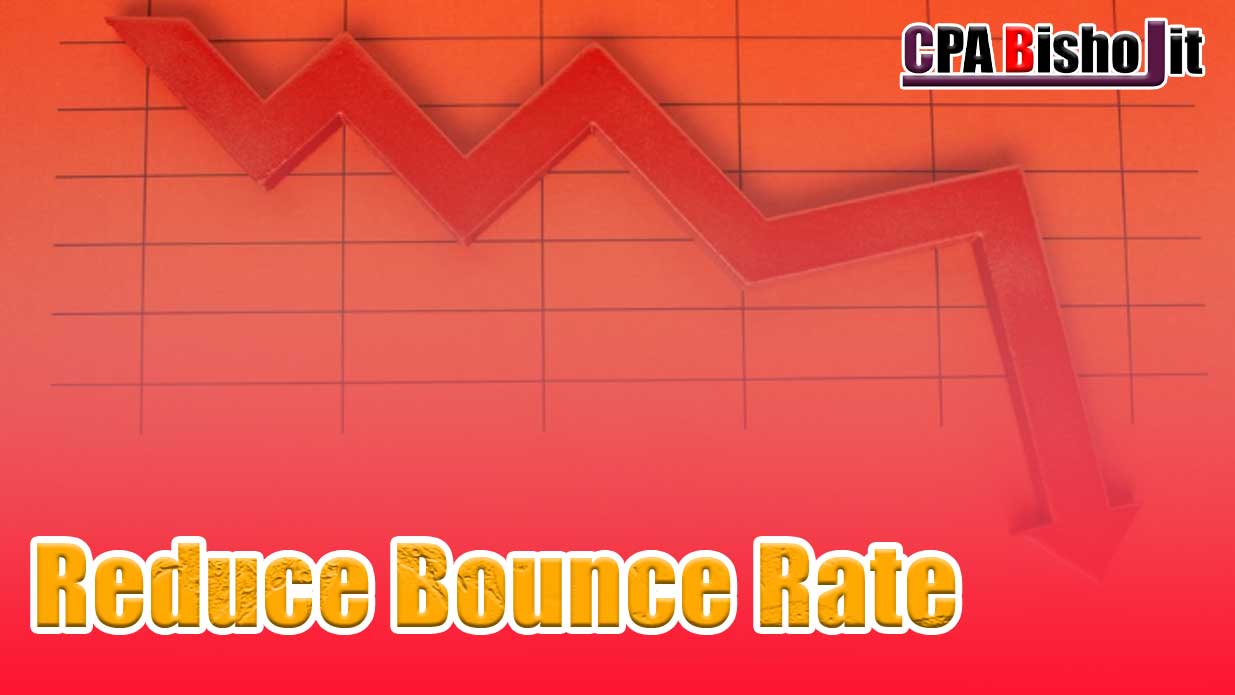How to Reduce Bounce Rate: Full Guide & 7 Essential Tips (2024)

Ever feel like you’re pouring your heart into a blog post, only to find out that most of your visitors are leaving before they even read it? It’s a tough situation—high bounce rates can be a real downer, especially when you’ve worked hard to create great content.
A high bounce rate means people are bouncing off your site quickly, without engaging. This isn’t just a random number; it affects your blog’s success and your ability to reach and keep readers. But don’t worry—improving your bounce rate is totally doable.
In this guide, we’ll explore what bounce rate really means, why it matters for your blog, and offer seven straightforward tips to keep your visitors interested and sticking around. Let’s get started on turning those bounces into loyal readers!
What is Bounce Rate?
Bounce rate is a simple yet powerful metric. Imagine it as a snapshot of how well your blog grabs and holds onto visitors. Specifically, it measures the percentage of people who land on your page and then leave without clicking on anything else. So, if 100 people visit your blog and 60 of them leave without exploring further, your bounce rate is 60%.
Think of it like this: if someone walks into a store, takes a quick glance around, and then walks out without buying anything, that’s a bit like a bounce. It’s not just about single-page visits; it’s about whether visitors are engaged enough to explore more.
Why Bounce Rate Matters for Blogs
A high bounce rate can be a real buzzkill for bloggers. It’s like a loud alarm ringing that something might not be right with your site. When visitors leave quickly, it’s often a sign that they didn’t find what they were looking for or that your content didn’t hit the mark. This can hurt your blog in several ways:
- User Experience: If visitors are bouncing, it often means they’re not having a great experience. This could be due to slow loading times, confusing navigation, or irrelevant content.
- SEO Impact: Search engines take bounce rate into account. A high bounce rate can signal to Google that your content isn’t satisfying visitors’ needs, which could hurt your search rankings and reduce your blog’s visibility.
- Engagement and Conversions: Lower engagement often means fewer subscribers, less interaction with your posts, and fewer conversions—whether that’s signing up for a newsletter or making a purchase.
What is a Good Bounce Rate?
Bounce rates can vary widely depending on your blog’s niche and goals, but there are some general benchmarks to keep in mind:
- Blogs and Content Sites: Generally, a bounce rate between 40% and 60% is considered average for blogs. If your rate is in this range, it means you’re doing okay, but there’s still room for improvement.
- E-commerce Sites: For online stores, a bounce rate between 20% and 40% is more typical. This lower rate reflects higher engagement as visitors are more likely to browse through products before making a purchase.
- High Bounce Rates: If your bounce rate is above 60%, it’s a red flag. It suggests that many visitors aren’t finding what they expect or that there might be issues with your site’s usability.
How to Reduce Bounce Rate: 7 Essential Tips
Reducing your blog’s bounce rate involves more than just technical fixes. It’s about creating a compelling and user-friendly experience that keeps visitors engaged. Let’s dive into seven essential tips to help you achieve that.
Tip 1: Optimize Your Blog’s Load Time
Ever clicked on a link and then twiddled your thumbs while waiting for the page to load? A sluggish website can be just as annoying for your visitors. Slow load times are a major reason people bounce from your blog, often before they even see what you have to offer.
What You Can Do:
- Compress Images: Large image files can drag down load times. Use tools like TinyPNG or ImageOptim to reduce file sizes without sacrificing quality.
- Leverage Browser Caching: By storing some of your site’s data on visitors’ browsers, you can speed up repeat visits. Plugins like W3 Total Cache can help with this.
- Choose a Quality Web Host: Sometimes, the issue is with your hosting provider. Opt for a reliable host with good performance reviews.
Testing tools like Google PageSpeed Insights or GTmetrix can provide specific recommendations on what’s slowing down your site and how to fix it.
Tip 2: Enhance Your Content’s Readability
Think of readability as the key to making your blog posts approachable and engaging. If your content looks intimidating, visitors might quickly lose interest.
What You Can Do:
- Break Up Text: Long blocks of text can be overwhelming. Divide your content into shorter paragraphs to make it easier to digest.
- Use Headings and Subheadings: These guide readers through your post, allowing them to quickly scan and find the information they’re interested in.
- Add Lists and Bullet Points: These are great for highlighting key points and making your content more skimmable.
By focusing on readability, you help your audience navigate your content effortlessly, making them more likely to stay and explore.
Tip 3: Create Compelling and Relevant Content
Imagine picking up a magazine only to find articles that don’t interest you. The same goes for your blog. If your content isn’t relevant or compelling, visitors won’t stick around.
What You Can Do:
- Know Your Audience: Understand who your readers are and what they care about. Tailor your content to address their needs and interests.
- Provide Value: Offer insights, tips, or solutions that are valuable to your readers. Content that solves problems or answers questions tends to keep visitors engaged.
- Be Authentic: Share your unique perspective or experiences to make your content stand out.
Engaging content not only reduces bounce rates but also builds trust and keeps readers coming back for more.
Tip 4: Improve Blog Navigation and User Experience
Navigating a poorly organized blog can be frustrating, leading visitors to leave in search of easier options.
What You Can Do:
- Simplify Menus: Ensure your navigation menus are straightforward and intuitive. Visitors should be able to find what they’re looking for without hassle.
- Add a Search Function: A search bar allows users to quickly locate specific content or topics.
- Ensure Mobile Friendliness: Many users access blogs from their phones. Make sure your blog is mobile-friendly with a responsive design.
Good navigation improves user experience and keeps visitors engaged with your content.
Tip 5: Utilize Clear and Effective Calls to Action (CTAs)
Without clear directions on what to do next, visitors might not take any action at all.
What You Can Do:
- Be Direct: Use action-oriented language like “Subscribe Now,” “Download Here,” or “Read More” to guide users.
- Make CTAs Stand Out: Use contrasting colors and strategic placement to make your CTAs eye-catching.
- Offer Value: Ensure that your CTAs provide clear benefits to users, such as exclusive content or special offers.
Effective CTAs help guide your visitors through your blog and encourage them to engage more deeply.
Tip 6: Implement Internal Linking Strategies
Internal links act as a roadmap to guide visitors through your blog. They help users discover more of your content and keep them engaged.
What You Can Do:
- Link to Related Posts: Include links to other relevant articles within your blog posts to encourage further reading.
- Use Descriptive Anchor Text: Instead of generic “click here,” use descriptive text that tells users what they’ll find.
- Update Old Posts: Regularly review and update older content with new internal links to keep it relevant.
Internal linking not only helps reduce bounce rates but also improves your blog’s SEO by keeping users engaged.
Tip 7: Leverage Visuals and Multimedia
A blog full of text can be overwhelming and dull. Visuals and multimedia make your content more engaging and easier to understand.
What You Can Do:
- Incorporate Images and Videos: High-quality visuals and videos can illustrate points more effectively and capture attention.
- Use Infographics: These can simplify complex information and make it more digestible.
- Include Interactive Elements: Features like polls or quizzes can increase user interaction and keep visitors on your site longer.
Step-by-Step Guide to Implementing These Tips
Now that you’ve got a solid set of strategies to reduce your blog’s bounce rate, it’s time to put them into action. This step-by-step guide will help you implement each tip effectively, ensuring you see real improvements in your site’s performance.
Step 1: Conduct a Bounce Rate Analysis
Before you start making changes, it’s crucial to understand where you currently stand. A thorough analysis of your bounce rate will provide the baseline you need to measure your progress.
How to Do It:
- Use Google Analytics: Dive into Google Analytics and navigate to the “Behavior” section. Here, you can see your bounce rate across different pages. Identify which pages have the highest bounce rates.
- Segment Your Data: Break down your bounce rate by device, traffic source, or location. This can reveal specific areas where you might need to focus your efforts.
- Look for Patterns: Are there certain types of content or specific topics that consistently have higher bounce rates? Identifying patterns will help you target the right areas for improvement.
Understanding your current bounce rate will give you a clear picture of where to focus your efforts and track the effectiveness of your changes.
Step 2: Plan and Execute Content Improvements
Once you’ve identified the pages and areas that need attention, it’s time to start making improvements. Content is king, and enhancing it can significantly lower your bounce rate.
How to Do It:
- Prioritize Pages with High Bounce Rates: Start with the pages that have the highest bounce rates and the most potential impact.
- Refresh Old Content: Update outdated posts with new information, better visuals, and improved readability. Sometimes, small tweaks can make a big difference.
- Enhance Readability: Break up long paragraphs, use subheadings, and add bullet points or lists. The easier your content is to read, the more likely visitors are to stick around.
- Add New Content: Consider creating new, relevant content that complements what’s already on your site. This can also help with internal linking.
Planning your content improvements and executing them methodically will help ensure that your changes are effective and long-lasting.
Step 3: Optimize Technical Aspects of Your Blog
Improving the technical aspects of your blog is just as important as enhancing your content. Even the best content can’t perform well if your site is slow or difficult to navigate.
How to Do It:
- Check Site Speed: Use tools like Google PageSpeed Insights to identify any technical issues slowing down your site. Focus on optimizing images, leveraging browser caching, and minimizing code where possible.
- Ensure Mobile Friendliness: Test your site on different devices to ensure it’s responsive and easy to use on mobile. Many visitors access blogs from their phones, so this step is crucial.
- Improve Navigation: Simplify your site’s navigation structure, making it easier for visitors to find what they’re looking for. Clear menus, a search bar, and easy access to important pages can make a big difference.
Optimizing the technical aspects of your blog will create a smoother, more enjoyable experience for your visitors, reducing the chances they’ll bounce.
Also Read: Proven 10 Tips for Improving WordPress SEO
Step 4: Monitor and Adjust Based on Analytics
After implementing these changes, your work isn’t done. It’s essential to continuously monitor your bounce rate and other key metrics to ensure your efforts are paying off.
How to Do It:
- Set Up Regular Reports: Use Google Analytics to set up weekly or monthly reports on your bounce rate and other key performance indicators (KPIs). This will help you stay on top of any changes.
- A/B Testing: If you’re experimenting with new strategies, consider running A/B tests to see what works best. For example, try different CTAs or content layouts to see which keeps visitors engaged.
- Adjust as Needed: If certain strategies aren’t working, don’t be afraid to tweak them. The digital landscape is always changing, and so should your approach.
Conclusion
Lowering your blog’s bounce rate is about more than just numbers—it’s about creating an engaging experience for your visitors.
Following the seven tips we’ve covered—like optimizing load times, improving readability, and enhancing user experience—you can make your blog a place where readers stay longer and return often. Implement these strategies step-by-step, monitor the results, and keep refining to ensure your content truly resonates with your audience.







I truly appreciate your technique of writing a blog. I added it to my bookmark site list and will